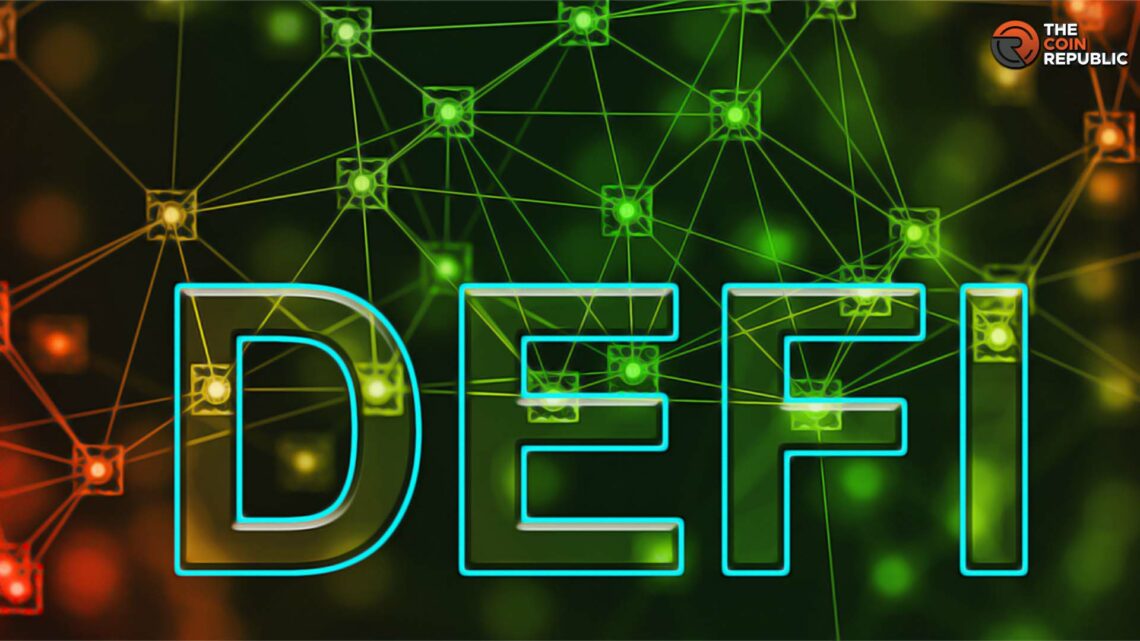- 1 Multi-chain environments revolutionize DeFi’s scalability and interoperability.
- 2 Cross-chain dynamics demand stringent security and integration measures.
- 3 Research and adaptability are pivotal for informed multi-chain DeFi investments.
As the decentralized finance (DeFi) ecosystem unfolds, many possibilities and advancements are brought forward. The introduction of multi-chain environments is one of the key innovations that are reshaping the DeFi landscape. These environments facilitate interoperability and cross-chain solutions, allowing various blockchain networks to communicate and transact seamlessly.
Understanding Multi-Chain Environments
Recent advancements in the blockchain landscape are breaking away from the conventional single-chain framework. Instead, we’re witnessing the rise of multi-chain environments. This innovative approach enables numerous blockchains to run side by side. But it’s not just about their parallel existence; these blockchains are intricately linked, ensuring that data and assets can move effortlessly between them.
Such a shift offers groundbreaking possibilities for Decentralized Finance (DeFi). By embracing multi-chain environments, DeFi applications can expand their reach and potential, offering a plethora of previously unattainable services. As blockchain networks interconnect more fluidly, the DeFi horizon appears broader and more promising.
Benefits of DeFi in Multi-Chain Environments
- Enhanced Liquidity and Market Reach: With multiple chains at play, DeFi projects can tap into liquidity pools from various blockchain networks. This ensures a more robust flow of capital, inviting larger participation and boosting the DeFi market’s reach and depth.
- Optimized User Experience: Multi-chain environments mean users are no longer restricted to a single blockchain’s offerings. They can seamlessly access diverse DeFi applications, switching between chains per their preferences and needs, ensuring a smooth, user-centric experience.
- Increased Interoperability: One of the standout advantages of multi-chain environments is the ease of cross-chain interactions. Assets and data can migrate across different chains, creating a holistic ecosystem where value transfers and information flows are unimpeded.
- Risk Diversification: Having DeFi applications spread across multiple chains allows for better risk distribution. If one blockchain faces a setback, the entire DeFi ecosystem continues. It ensures resilience and offers users and investors a safety net.
- Boosting Innovation and Competition: With multiple blockchains coexisting, developers have a wider playground. They can experiment with different chain-specific features, fostering innovation. Additionally, this environment promotes healthy competition among chains, ensuring constant improvements and better user services.
Challenges and Limitations of DeFi in Multi-Chain Environments
- Complex Integration Processes: As DeFi ventures into multi-chain terrains, the challenge of integrating various chains emerges. Each blockchain has its unique architecture and consensus mechanism. Ensuring they work harmoniously can be daunting for developers, requiring meticulous planning and execution.
- Security Concerns: With assets and data flowing across chains, safeguarding them becomes paramount. Each chain might have its vulnerabilities. Ensuring airtight security across all chains can be intricate and challenging, especially during cross-chain transactions.
- Standardization Issues: The decentralized nature of DeFi and the use of multiple chains can lead to consistency in protocols and standards. Without a uniform set of regulations or guidelines, the ecosystem might face disparities in operations, leading to inefficiencies.
- Potential for Fragmented Liquidity: While multi-chain environments can enhance liquidity, there’s also a risk of becoming fragmented across various chains. If managed appropriately, users might avoid difficulties finding sufficient liquidity on a particular chain, hindering smooth transactions.
- Higher Learning Curve for Users: Navigating through a multi-chain DeFi landscape might overwhelm end-users. The variety of options and chain-specific features could complicate the user experience, especially for those new to the DeFi space.
While multi-chain environments in DeFi bring forth numerous opportunities, they are full of challenges. Addressing these limitations will be crucial for the sustained growth and success of DeFi in such a dynamic setting.
Popular Multi-Chain Platforms for DeFi
- Polkadot: Known for its relay chain and parachain structure, Polkadot ensures seamless inter-chain data transfer.
- Cosmos: With its ‘Hub and Zone’ model, Cosmos emphasizes scalability and interoperability.
- Avalanche: Boasting a robust consensus mechanism, Avalanche prioritizes swift, low-cost transactions.
Security Considerations in Multi-Chain DeFi
- Complex Integration Processes: As DeFi ventures into multi-chain terrains, the challenge of integrating various chains emerges. Each blockchain has its unique architecture and consensus mechanism. Ensuring they work harmoniously can be daunting for developers, requiring meticulous planning and execution.
- Security Concerns: With assets and data flowing across chains, safeguarding them becomes paramount. Each chain might have its vulnerabilities. Ensuring airtight security across all chains can be intricate and challenging, especially during cross-chain transactions.
- Standardization Issues: The decentralized nature of DeFi and the use of multiple chains can lead to consistency in protocols and standards. Without a uniform set of regulations or guidelines, the ecosystem might face disparities in operations, leading to inefficiencies.
- Potential for Fragmented Liquidity: While multi-chain environments can enhance liquidity, there’s also a risk of becoming fragmented across various chains. If managed appropriately, users might avoid difficulties finding sufficient liquidity on a particular chain, hindering smooth transactions.
- Higher Learning Curve for Users: Navigating through a multi-chain DeFi landscape might overwhelm end-users. The variety of options and chain-specific features could complicate the user experience, especially for those new to the DeFi space.
Industry Trends and Future of DeFi in Multi-Chain Environments
- Inter-chain DEXs: Decentralized Exchanges (DEXs) that operate across multiple chains are gaining traction.
- Layer 2 Solutions: These aim at offloading some of the processing from the primary chain, ensuring even higher scalability.
- Collaborative Ventures: As the ecosystem grows, partnerships between blockchain projects will likely surge, fostering a holistic growth environment.
Investing in Multi-Chain DeFi Projects
Investment decisions in multi-chain DeFi require a fine balance between optimism and caution.
- Due Diligence: Beyond the hype, research on project fundamentals, team credentials, and technology is crucial.
- Risk Management: Diversify investments and be prepared for volatility. The multi-chain DeFi space, while promising, is still nascent and subject to fluctuations.
- Stay Updated: The rapid pace of developments means that staying informed is vital. Engage with community forums, official channels, and trusted news sources.
Conclusion
As we stand on the cusp of a DeFi revolution, multi-chain environments present a new frontier of possibilities and challenges. Embracing this paradigm with informed decisions, a keen understanding of underlying mechanics, and an unwavering commitment to security can pave the way for an inclusive and efficient decentralized future. As with all technological advancements, the multi-chain ecosystem’s future success will hinge on adaptability, collaboration, and a relentless pursuit of innovation.

Adarsh Singh is a true connoisseur of Defi and Blockchain technologies, who left his job at a “Big 4” multinational finance firm to pursue crypto and NFT trading full-time. He has a strong background in finance, with MBA from a prestigious B-school. He delves deep into these innovative fields, unraveling their intricacies. Uncovering hidden gems, be it coins, tokens or NFTs, is his expertise. NFTs drive deep interest for him, and his creative analysis of NFTs opens up engaging narratives. He strives to bring decentralized digital assets accessible to the masses.


 Home
Home News
News










